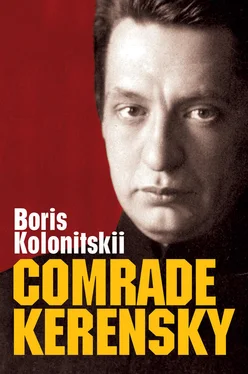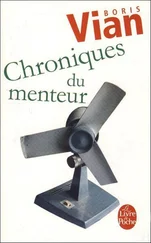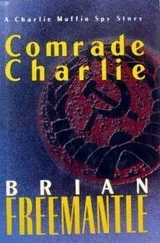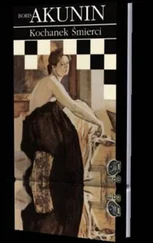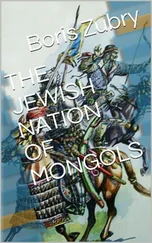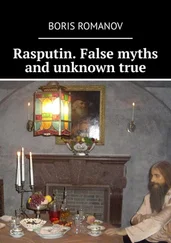48 48. Tan, ‘A. F. Kerenskii’, p. 2; E. V–ch, A. F. Kerenskii narodnyi ministr, pp. 4–5.
49 49. F. M. Kerensky’s autobiographies are preserved in several archives: Rossiiskii gosudarstvennyi istoricheskii arkhiv [RGIA, the Russian State Historical Archive], fond 733, opis’ 225, delo 203, listy 19–22 ob.; and Rukopisnyi otdel Instituta russkoi literatury [the Manuscript Department of the Institute of Russian Literature], fond 274, opis’ 1, delo 398, list 145.
50 50. Photographs of Kerensky as a child with his mother were published in a number of booklets and magazines: Solntse Rossii, no. 368 (10) (1917), p. 3; E. V–ch, A. F. Kerenskii narodnyi ministr, p. 4.
51 51. Foreign diplomats believed she was Jewish. See George Buchanan, My Mission to Russia and Other Diplomatic Memories (London: Cassell, 1923), vol. 2, p. 64.
52 52. On how anti-Semites viewed Kerenskii, see Kolonitskii, ‘Aleksandr Fedorovich Kerenskii kak “zhertva evreev” i “evrei”’, in Jews and Slavs, vol. 17: The Russian Word in the Land of Israel, the Jewish Word in Russia (Jerusalem, 2006), pp. 241–53.
53 53. Solntse Rossii, no. 368 (10) (1917), p. 4; E. V–ch, A. F. Kerenskii narodnyi ministr, p. 9.
54 54. Tan, ‘A. F. Kerenskii’, p. 2.
55 55. Narodnaia gazeta, 15 July 1917.
56 56. Kir’iakov, ‘A. F. Kerenskii’, Niva, no. 19 (1917), p. 288.
57 57. Kerensky, The Kerensky Memoirs, p. 17.
58 58. E. V–ch, A. F. Kerenskii narodnyi ministr, p. 5.
59 59. Tan, ‘A. F. Kerenskii’, p. 2; Kir’iakov, ‘A. F. Kerenskii’, Niva, no. 19 (1917), p. 288.
60 60. Solntse Rossii, no. 368 (10) (1917), p. 4. In 1917 the boys were aged twelve and nine.
61 61. Kir’iakov, ‘A. F. Kerenskii’, Niva, no. 19 (1917), p. 288. Another writer also claimed that Kerenskii became an SR while still a student. See E. V–ch, A. F. Kerenskii narodnyi ministr, p. 5.
62 62. Aleksandr Fedorovich Kerenskii (Po materialam Departamenta politsii), p. 5; Kerensky, The Kerensky Memoirs, pp. 47–50.
63 63. E. V–ch, A. F. Kerenskii narodnyi ministr, p. 5.
64 64. Edinstvo, 6 May 1917.
65 65. Aleksandr Fedorovich Kerenskii (Po materialam Departamenta politsii), pp. 5–6; Kerensky, The Kerensky Memoirs, pp. 71–2; Kerensky, The Crucifixion of Liberty (London: Barker, 1934), pp. 114–19; Richard Abraham, Alexander Kerensky: The First Love of the Revolution (London: Sidgwick & Jackson, 1987), pp. 21–35.
66 66. E. V–ch, A. F. Kerenskii narodnyi ministr, p. 5.
67 67. ‘Novyi voennyi i morskoi ministr’, Russkii invalid, 5 May 1917.
68 68. Leonidov, Vozhd’ svobody A. F. Kerenskii, p. 8.
69 69. E. V–ch, A. F. Kerenskii narodnyi ministr, p. 6.
70 70. Kerenskii, Rechi A. F. Kerenskogo o revoliutsii, s ocherkom V. V. Kir’iakova ‘Kerenskii kak orator’, p. 7.
71 71. Abraham, Alexander Kerensky, pp. 39–40; Kerensky, The Crucifixion of Liberty, p. 121; Kerensky, The Kerensky Memoirs, pp. 74–5.
72 72. E. V–ch, A. F. Kerenskii narodnyi ministr, p. 7. See also Kir’iakov, ‘A. F. Kerenskii’, Niva, no. 19 (1917), p. 289.
73 73. Tan, ‘A. F. Kerenskii’, p. 2.
74 74. Anon, Syn Velikoi Russkoi Revoliutsii, pp. 3, 9.
75 75. Vasilii Maklakov, Iz vospominanii (New York: Chekhov, 1954), p. 266. Jörg Baberowski suggests that all political defence lawyers used court hearings to make political speeches, Maklakov included. See Baberowski, Autokratie und Justiz: Zum Verhältnis von Rechtsstaatlichkeit und Rückständigkeit im ausgehenden Zarenreich 1864–1914 (Frankfurt am Main: Klostermann, 1996), pp. 577–8.
76 76. Leonidov, Vozhd’ svobody A. F. Kerenskii, pp. 10–11. Kerenskii’s Odessan biographer wrote about him in similar terms. See E. V–ch, A. F. Kerenskii narodnyi ministr, p. 7.
77 77. Kerensky, The Kerensky Memoirs, pp. 76–80.
78 78. Leonidov, Vozhd’ svobody A. F. Kerenskii, pp. 11–12.
79 79. E. V–ch, A. F. Kerenskii narodnyi ministr, pp. 7–8.
80 80. Armand, Kerenskii, p. 3.
81 81. Gosudarstvennyi arkhiv Rossiikoi Federatsii [GARF, the State Archive of the Russian Federation], fond 1807, opis’ 1, delo 242, listy 42–3; delo 244, listy 4–5.
82 82. Shestoi s”ezd RSDRP (bol’shevikov), avgust 1917 goda: Protokoly (Moscow: Gospolitizdat, 1958), p. 30.
83 83. Armand, Kerenskii, pp. 3–4.
84 84. Leonidov, Vozhd’ svobody A. F. Kerenskii, p. 14.
85 85. For this purpose, Kerenskii had to ‘acquire’ a small house in the town. The transaction was fictitious, although Kir’iakov insists that the election was ‘strictly within the law’. Kerenskii described himself in the application form as a ‘property owner of the town of Vol’sk’ and was then elected as a representative of Saratov province at the provincial electoral assembly. See Abraham, Alexander Kerensky, pp. 56–7; Kir’iakov, ‘A. F. Kerenskii’, Niva, no. 19 (1917), p. 289; RGIA, fond 1278, opis’ 9, delo 341, list 1. The most thorough study of Kerenskii’s activities in the Duma is Stanislav Tiutiukin, Aleksandr Kerenskii: Stranitsy politicheskoi biografii (1905–1917 gg.) (Moscow: ROSSPEN, 2012), pp. 38–106.
86 86. Kir’iakov, ‘A. F. Kerenskii’, Niva, no. 19 (1917), p. 289; E. V–ch, A. F. Kerenskii narodnyi ministr, p. 8.
87 87. Anon, Syn Velikoi Russkoi Revoliutsii, p. 3.
88 88. Armand, Kerenskii, p. 5; Aleksandr Fedorovich Kerenskii (Po materialam Departamenta politsii), p. 3.
89 89. E. V–ch, A. F. Kerenskii narodnyi ministr, pp. 8–9, 10. ‘That is how it was, and that is how it will be!’ was the utterance of Interior Minister Aleksandr Makarov in respect of the Lena goldfields massacre. It caused widespread public outrage.
90 90. Anon, Syn Velikoi Russkoi Revoliutsii, p. 9.
91 91. Armand, Kerenskii, pp. 4–5.
92 92. ‘Doneseniia L. K. Kumanina iz ministerskogo pavil’ona Gosudarstvennoi Dumy, dekabr’ 1911–fevral’ 1917 goda’, Voprosy istorii, no. 1 (2000), pp. 12–13; no. 3 (2000), p. 4.
93 93. Rashel’ Khin-Gol’dovskaia, ‘Iz dnevnikov 1913–1917’, Minuvshee: Istoricheskii al’manakh (St Petersburg), vyp. 21 (1997), p. 576.
94 94. Armand, Kerenskii, p. 4.
95 95. Aleksandr Fedorovich Kerenskii (Po materialam Departamenta politsii), pp. 38, 39.
96 96. Nikolai Tagantsev, ‘Iz moikh vospominanii (Detstvo. Iunost’)’, in 1917 god v sud’bakh Rossii i mira: Fevral’skaia revoliutsiia (Ot novykh istochnikov k novomu osmysleniiu) (Moscow: Institut rossiiskoi istorii Rossiiskoi akademii nauk, IRI RAN, 1997), p. 246.
97 97. Leonidov, Vozhd’ svobody A. F. Kerenskii, p. 5.
98 98. Kerenskii was a delegate representing the Vol’sk Association of Ledger Clerks. He proposed himself for membership and confirmed in writing his willingness to pay the membership fee. See Gosudarstvennyi arkhiv Saratovskoi oblasti, fond 53, opis’ 1 (1913), delo 3, list 202–202 ob.
99 99. Pravye partii: Dokumenty i materialy, ed. Iu. I. Kir’ianov, vol. 2: (1911–1917) (Moscow: ROSSPEN, 1998), pp. 349–50.
100 100. Aleksandr Fedorovich Kerenskii (Po materialam Departamenta politsii), p. 9; Kerensky, The Crucifixion of Liberty, p. 163; Abraham, Alexander Kerensky, pp. 52, 64.
101 101. Aleksandr Fedorovich Kerenskii (Po materialam Departamenta politsii), p. 11; Kerensky, The Crucifixion of Liberty, pp 173–4.
102 102. In memoirs and the research literature this organization is often described as Masonic, and Kerenskii himself described it as such. Kerensky, The Kerensky Memoirs, pp. 88–91. The Great Orient of the Peoples of Russia did not, however, resemble the majority of Masonic lodges: there were virtually no mystical rituals, and little time was devoted to discussing problems of moral philosophy. The association was an elite, non-partisan society striving to overthrow the system of monarchy.
Читать дальше
